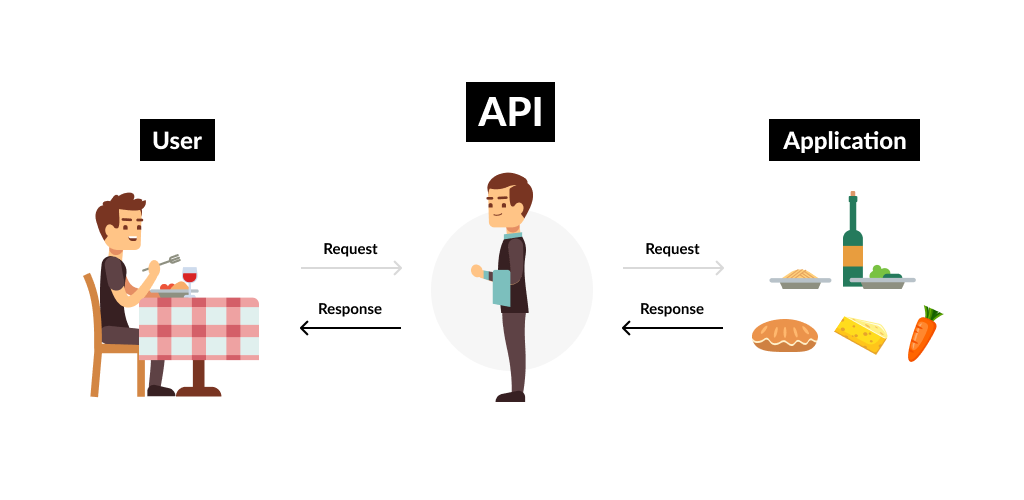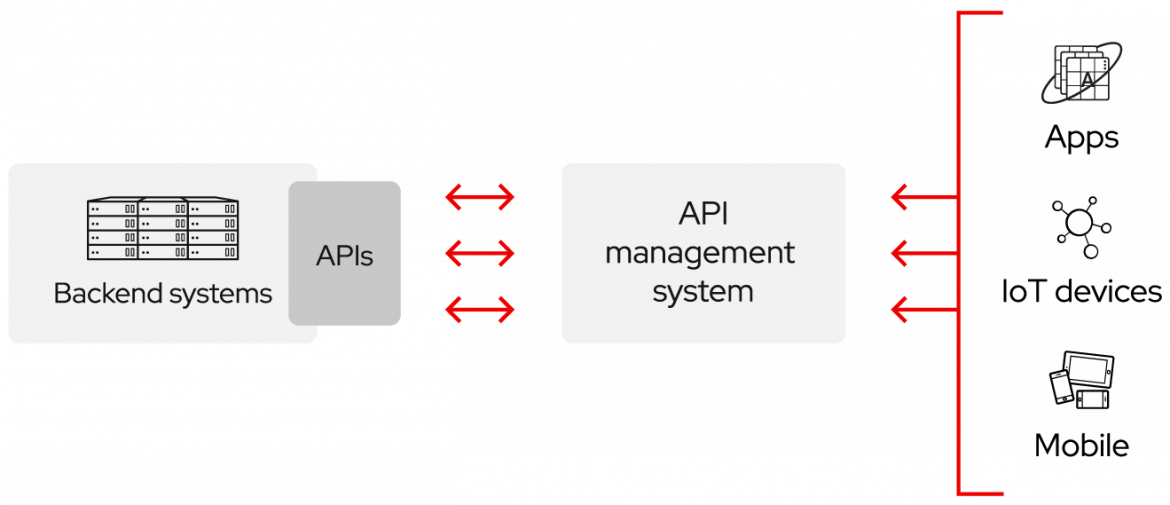Explore the fundamental role of APIs(Application Programming Interfaces), in enabling different software applications to communicate and interact with each other.

Overview
API stands for application programming interface, which is a set of definitions and protocols for building and integrating application software.
How Do APIs Work?
APIs let your product or service communicate with other products and services without having to know how they’re implemented. This can simplify app development, saving time and money. When you’re designing new tools and products—or managing existing ones—APIs give you flexibility; simplify design, administration, and use; and provide opportunities for innovation.
APIs are sometimes thought of as contracts, with documentation that represents an agreement between parties: If party 1 sends a remote request structured a particular way, this is how party 2’s software will respond.
Because APIs simplify how developers integrate new application components into an existing architecture, they help business and IT teams collaborate. Business needs often change quickly in response to ever shifting digital markets, where new competitors can change a whole industry with a new app. In order to stay competitive, it's important to support the rapid development and deployment of innovative services. Cloud-native application development is an identifiable way to increase development speed, and it relies on connecting a micro services application architecture through APIs.
APIs are a simplified way to connect your own infrastructure through cloud-native app development, but they also allow you to share your data with customers and other external users. Public APIs represent unique business value because they can simplify and expand how you connect with your partners, as well as potentially monetize your data (the Google Maps API is a popular example).

For example, imagine a book-distributing company. The book distributor could give its customers a cloud app that lets bookstore clerks check book availability with the distributor. This app could be expensive to develop, limited by platform, and require long development times and ongoing maintenance.
Alternatively, the book distributor could provide an API to check stock availability. There are several benefits to this approach:
- Letting customers access data via an API helps them aggregate information about their inventory in a single place.
- The book distributor can make changes to its internal systems without impacting customers, so long as the behavior of the API doesn’t change.
- With a publicly available API, developers working for the book distributor, book sellers or third parties could develop an app to help customers find the books they’re looking for. This could result in higher sales or other business opportunities.
In short, APIs let you open up access to your resources while maintaining security and control. How you open access and to whom is up to you. API security is all about good API management, which includes the use of an API gateway. Connecting to APIs, and creating applications that consume the data or functionality exposed by APIs, can be done with a distributed integration platform that connects everything—including legacy systems.
Types of API
Remote APIs
Remote APIs are designed to interact through a communications network. By remote, we mean that the resources being manipulated by the API are somewhere outside the computer making the request. Because the most widely used communications network is the internet, most APIs are designed based on web standards. Not all remote APIs are web APIs, but it’s fair to assume that web APIs are remote.
Web APIs typically use HTTP for request messages and provide a definition of the structure of response messages. These response messages usually take the form of an XML or JSON file. Both XML and JSON are preferred formats because they present data in a way that’s easy for other apps to manipulate.
1. JSON-RPC
JSON-RPC (JavaScript Object Notation Remote Procedure Call) is one of the remote procedure call protocols that facilitates remote procedure invocation and response exchange using JSON format. This is very familiar with most of Web3 developers since Ethereum utilizes this JSON-RPC protocol to enable clients to interact with the Ethereum blockchain. Through JSON-RPC, Ethereum clients can perform various tasks, such as querying block information, generating transactions, and managing nodes.
2. REST
REST refers to "representational state transfer". REST is a set of architectural principles attuned to the needs of lightweight web services and mobile applications. Because it's a set of guidelines, it leaves the implementation of these recommendations to developers.
When a request for data is sent to a REST API, it’s usually done through hypertext transfer protocol (commonly referred to as HTTP). Once a request is received, APIs designed for REST (called RESTful APIs or RESTful web services) can return messages in a variety of formats: HTML, XML, plain text, and JSON. JSON (JavaScript object notation) is favored as a message format because it can be read by any programming language (despite the name), is human- and machine-readable, and is lightweight. In this way, RESTful APIs are more flexible and can be easier to set up. Aptos and blockchains built by Cosmos SDK support REST API to enable clients to interact with themselves.
An application is said to be RESTful if it follows 6 architectural guidelines. A RESTful application must have:
- A client-server architecture composed of clients, servers, and resources.
- Stateless client-server communication, meaning no client content is stored on the server between requests. Information about the session’s state is instead held with the client.
- Cacheable data to eliminate the need for some client-server interactions.
- A uniform interface between components so that information is transferred in a standardized form instead of specific to an application’s needs. This is described by Roy Fielding, the originator of REST, as “the central feature that distinguishes the REST architectural style from other network-based styles.”
- A layered system constraint, where client-server interactions can be mediated by hierarchical layers.
- Code on demand, allowing servers to extend the functionality of a client by transferring executable code (though also reducing visibility, making this an optional guideline).
3. Websocket
WebSocket is a protocol that enables bidirectional communication between a client and a server over a network connection. Unlike traditional request-response protocols like HTTP, WebSocket allows for a persistent and full-duplex connection, meaning both the client and the server can send and receive data in real-time.
WebSocket is particularly valuable in blockchain applications due to its real-time capabilities and efficient data exchange:
-
Real-time Data Updates: Blockchain networks, like Ethereum, generate a continuous stream of new data blocks and transactions. WebSocket enables applications to receive real-time updates of the latest block data, transaction confirmations, and other critical events.
-
Decentralized Application (dApp) Interaction: In blockchain-based dApps, WebSocket provides an efficient way to interact with smart contracts and the blockchain. It allows dApps to listen for contract events, respond to changes in the blockchain state, and provide immediate feedback to users.
-
Instant Notifications: WebSocket is well-suited for instant notifications, such as alerting users about specific blockchain events or transaction status changes. This feature is beneficial in various use cases, including payment processing, token transfers, and real-time market data updates.
-
Efficient and Low Latency Communication: WebSocket reduces communication overhead compared to traditional polling methods, as it eliminates the need for frequent requests from the client to the server. This results in lower latency and a more responsive user experience.
-
Real-time Tracking and Monitoring: Blockchain networks can be complex, and WebSocket allows for real-time tracking and monitoring of network statistics, mining activities, and transaction mempool status.
In summary, WebSocket's real-time bidirectional communication capabilities make it an excellent choice for blockchain applications, including Ethereum and other decentralized networks(Cosmos Hub, Sui, etc.). Its efficiency and responsiveness enhance user experiences and enable developers to build sophisticated and interactive blockchain-based solutions.
